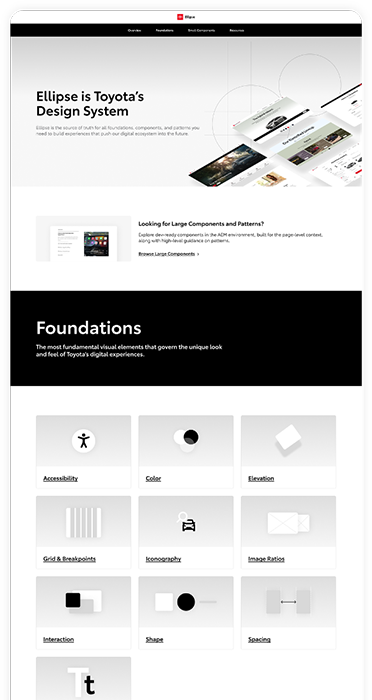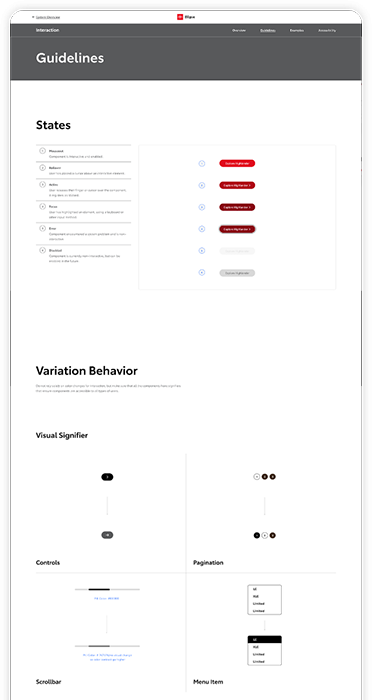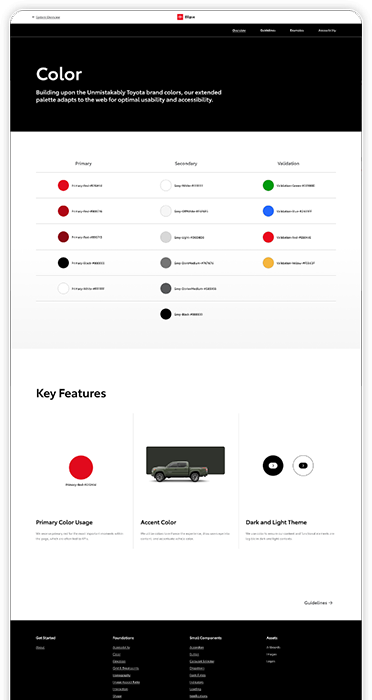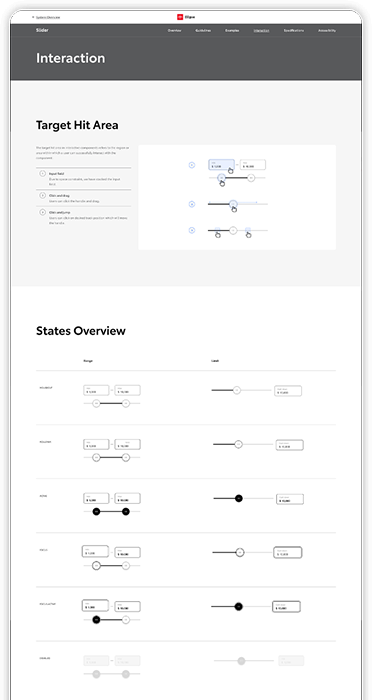project //
Ellipse - Toyota's Design System
When I joined Saatchi, the Ellipse design system already existed, but it was only scratching the surface of what a design system could be. It followed an atomic design approach, yet the way components were built and implemented made it rigid and hard to scale. Many were designed for single use cases, and layouts that looked nearly identical were created as separate components to fit specific needs.
Rebuilding for Flexibility and Scale
One of my first goals was to rethink how the system was structured. So we began breaking down components into smaller, reusable building blocks that could be assembled to support almost any layout. This modular approach made Ellipse more flexible and reduced redundancy across teams.
We also focused on building stronger connections between design and development. By streamlining component handoffs and documenting usage patterns, teams could build faster with fewer inconsistencies.
Applying Proven Systems Thinking
It’s the same philosophy I used at Vans, where we saw design and development time drop by about 20% after shifting to a modular system. The goal wasn’t just efficiency, it was to create a system that encouraged creativity and adaptability rather than limiting it. I like to think of it as a low fence: it keeps the small stuff contained, but it leaves room for the bigger ideas to break out.
Impact
Improved component reuse and flexibility across the platform
Reduced design and development time by over 20%
Increased alignment between design and engineering through better documentation and shared patterns
Established a scalable foundation that supports future brand and platform growth
Looking Ahead
Ellipse continues to evolve into a more fluid, adaptable foundation that supports Toyota’s broader digital transformation. It enables design and engineering teams to focus less on rebuilding patterns and more on solving complex product challenges, improving accessibility, and delivering better user experiences at scale.
Design systems are never static. They grow with the people and products that use them, and they have to evolve with new technologies, new platforms, and new ways of working.



